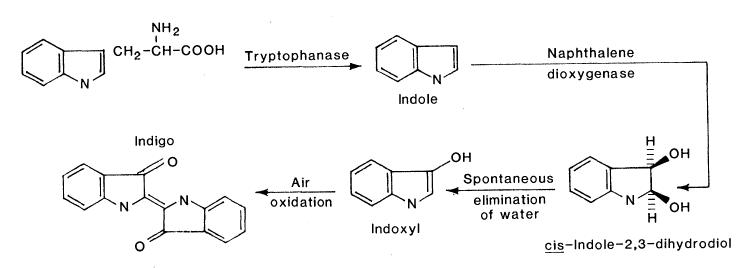Team:Cornell/project/wetlab/results/nah operon
From 2012.igem.org
nah Operon Expression
Biosynthesis of Indigo
When the nah7 operon is transformed into E. coli and expressed, the cells have the ability to produce indigo from tryptophan. Therefore, as an indirect proof of the nah operon's function, several cultures were set up to determine if indigo was present when supplemented with 200 μM tryptophan.E. coli contains the enzyme tryptophanase, which splits the indole group from the peptide backbone. Naphthalene dioxygenase, from the nah operon, then creates a compound which will spontaneously eliminate water and be air oxidized into indigo as the final product.


Testing
After one day of initial testing, the cells did not appear to have been expressing the operon strongly enough for red fluorescent protein, which it was labeled with, to be detectable. After two days, the red fluorescent protein could be seen, but an extraction with chloroform did not appear to remove any hydrophobic purple dye from the cultures, nor were purple spots visible on the plate. Six days after the initial cultures were started, the liquid culture appeared purple. After extracting with chloroform, the solution was a light purple color. Chemical tests to determine if the compound was indigo were unsuccessful. Fig. 1. Pathway by which E. coli can produce indigo from tryptophan when expressing genes of the Nah7 operon. (Ensley et al., 1983)
Fig. 1. Pathway by which E. coli can produce indigo from tryptophan when expressing genes of the Nah7 operon. (Ensley et al., 1983)
 "
"







